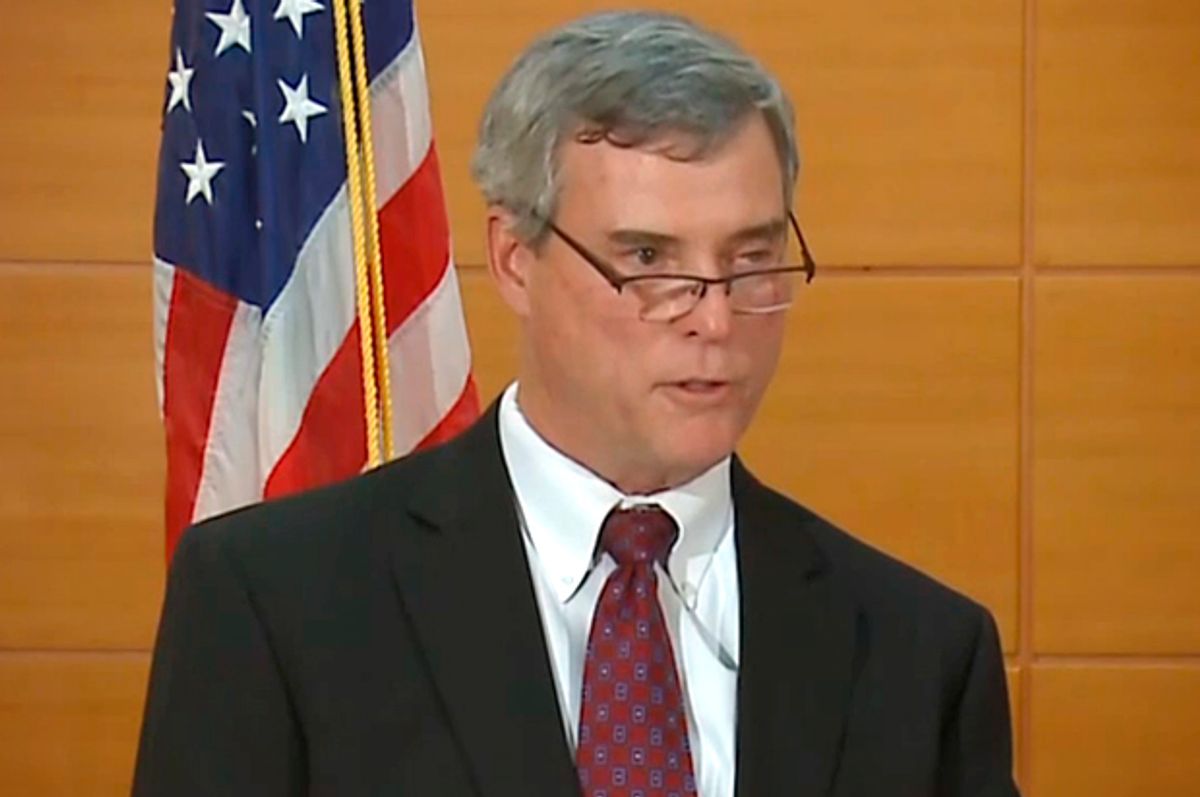To read through the transcripts of the Ferguson grand jury investigation of the shooting of Michael Brown is to be reminded of how unreliable eyewitness testimony often is. We know a great deal of this testimony must be unreliable, because it’s so contradictory on so many key points.
In particular, in regard to what, from a legal perspective, is the single most important question in the case, various witnesses tell critically different stories. That question is whether Brown was running away from, or charging toward, or slowly staggering in the direction of, Darren Wilson, the police officer who shot at him 12 times, hitting him with seven bullets.
This question is crucial, because under Missouri law, Wilson could only use deadly force against Brown if he reasonably believed that doing so was necessary to stop Brown from causing serious harm to Wilson or others. It’s hard to see how this could be a reasonable belief if Brown were merely trying to get away, after the two men struggled briefly at the door of Wilson’s police vehicle, with Wilson still inside it. (Wilson fired two shots, one of which grazed Brown’s thumb, after Brown apparently tried to grab Wilson’s gun.)
Brown managed to get approximately 154 feet from the vehicle, when, according to some witnesses, he turned and raised his hands above his head, signaling his willingness to surrender. Other witnesses denied that Brown raised his hands at all. More crucially, several witnesses claimed Brown started moving back toward Wilson, but they gave starkly different accounts of that movement.
One witness wrote in his or her journal on the day of the shooting that Brown had “started running right at the cop like a football player. " (The journal also features unambiguously racist comments.)
Another witness testified that Brown had staggered slowly toward Wilson, while yet another described how Brown “just went forward like his body was just going down.”
Wilson himself gave a vivid account of a gigantic, almost superhuman -- or perhaps demonic -- Brown moving toward him with apparently murderous intent, undeterred by the fusillade of bullets the officer unleashed on his fearsome attacker.
How are we to make sense of these radically different accounts of a relatively simple series of events, taking place in broad daylight before many witnesses?
In Wilson’s case, the answer is obvious: Defendants who testify in criminal proceedings have the strongest possible motives to cast their own actions in the most positive light. Other witnesses to the shooting no doubt have their own biases – as the racist remarks in the journal of the witness whose account is most favorable to Wilson’s story illustrates – but even aside from conscious or unconscious bias, a host of psychological factors make eyewitness testimony far from reliable.
The easiest way to sum up those factors is this: People are as a general matter actually quite bad at recalling accurately what they’ve witnessed, and, worse yet, they (we) tend to have great confidence in our ability to recall events accurately. More perversely still, people attempting to judge the credibility of eyewitnesses put great stock in the level of confidence a witness displays in regard to the accuracy of the witness’s recall, even though experimental psychology has demonstrated that there is no correlation between such confidence and accurate recall.
Many other factors conspire to make eyewitness testimony unreliable: confirmation bias leads us to see what we expect to see, even if it isn’t actually there, while misinformation effects produce false memories of things that never happened. A famous example of the latter is a Dutch psychology experiment in which more than half of the subjects recalled seeing film footage of an airliner crashing into a building, after researchers referenced the footage in interviews with the subjects. Although the plane crash was a real event that the subjects all recalled vividly, no footage of the crash ever existed.
In another famous experiment, subjects were asked to count the number of passes made by two basketball teams wearing different colored jerseys. In the midst of the game, a man in a gorilla suit walked slowly across the court. When asked afterward if they had noticed anything unusual during the game, nearly half of the subjects didn’t recall anything noteworthy. Such experiments illustrate our tendency to miss even the most obvious evidence when we are under various kinds of cognitive stress.
All of this points to how problematic it can be to rely on eyewitness testimony when attempting to untangle the truth, whether in courts of law, or those of public opinion. That's a lesson that resonates again looking at the Ferguson grand jury transcripts.

Shares